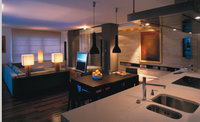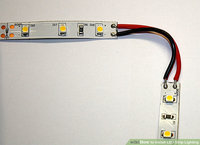Light instead of coffee? How light gives you energy
It is morning and still dark and you are still tired. When there was light in your bedroom, you could get out of bed much better and you were much more awake than now. You replace the bedside lamp with a universal white lamp and when you read in this light you notice that you can fall asleep much worse afterward. You are tired and you go to bed. You first brush your teeth at the fluorescent lighting in the bathroom and then you are suddenly wide awake. If you are familiar with one of these situations, it might be a good idea to adjust the (
LED) lighting in your home so that you will no longer be bothered by this.
How does the influence of artificial light work?
Especially in the dark months of the year, we actually have very little light and that is why using the right lighting is so important. The days are getting shorter and when we go to work in the morning it is dark and when we go home after work, it is dark again. All you see at the office is artificial light and when you drive home you see it again at the street lamps and even the light in the kitchen and next to your bed is artificial light. You hardly see healthy daylight anymore. And just as normal daylight can affect our hormonal household, so does artificial
led bulb light with us, and that ultimately affects our sleep rhythm, which is completely upset.
How to use artificial light to his advantage
Artificial light affects our biorhythm and that is not good. So we really need daylight to keep our pace. But if these things have negative consequences for us, can't we do something about it to change that? The answer is yes. We can do this by using the correct light colors. Optimal light for comfortable reading - without losing sleep We need warm light to be able to read well and calmly. Bluish light has a negative effect on our rhythm and can prevent us from falling asleep, or at least fall asleep worse.
Two rules for the effect of artificial light
Before we go through the two rules, it is important to explain the fundamental operation of the different light colors: Bluish light: these are colors such as universally white and daylight white, which actually keep us awake and thus disturb our sleep rhythm. Reddish light such as warm white brings us into a relaxed state. Rule 1: Biologically, it comes down to bluish light suppressing the production of melatonin. Melatonin is also popularly called the sleep hormone. This light actually makes you more alert, which makes it easier to stay awake, which is of course not desirable. Rule 2: The reddish light we mentioned above ensures that the hormonal balance remains intact. The natural production of melatonin, the sleep hormone, remains fully intact and because of this light we do not suffer from a disturbed rhythm and we get the rest that our body needs.
Convert the negative to the positive
If we combine the two lines, we can conclude that the three examples that we have given may have originated from the wrong light color. Of course, we must not forget that there can also be all sorts of other factors that can confuse our sleep rhythm, but using the wrong light color can certainly play a part in this. Because what do the aforementioned situations look like if you use the right light color? It is very dark early in the morning and there is no natural light yet. The production of melatonin is considerably slowed down by bluish artificial light. To wake up well and rested, you need a color temperature of at least 6,500 Kelvin. Reading in bed with the wrong light ultimately ensures that you will get over your natural sleep. To eventually get tired by reading, the lamp must have a color temperature of up to 2,700 Kelvin, everything above that is not good and will keep you from your sleep. It is therefore not advisable to use bluish light even when brushing your teeth, because here too the natural sleep rhythm will be considerably confused.


Comments
Post a Comment